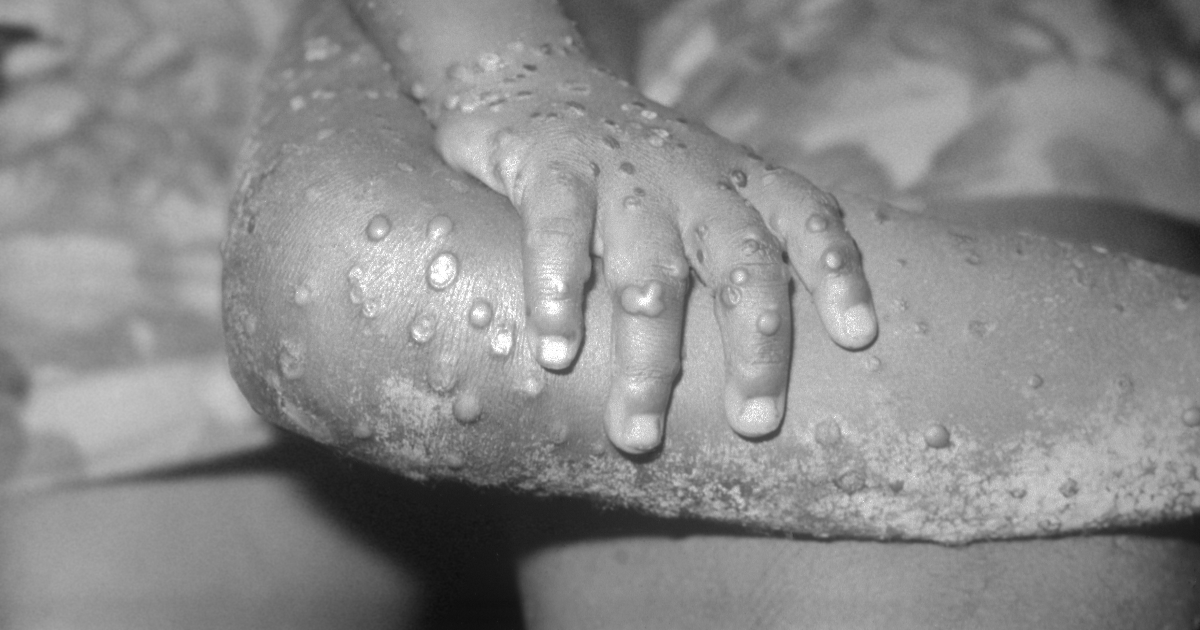Monkeypox is not ‘vaccine acquired’ shingles

Several Instagram posts feature an image of a man sitting behind a table which has a sign on it saying: “Monkeypox is vaccine aquired [sic] shingles covered up change my mind”.
This is false.
As of 26 May there have been 106 confirmed cases of monkeypox in the UK since the first were detected early this month. The disease is caused by an infection with the monkeypox virus and is transmitted by close contact with lesions, body fluids, respiratory droplets and contaminated materials such as bedding.
Shingles, however, is an infection caused by the herpes varicella-zoster virus, which also causes chickenpox. Only people who have had chickenpox can get shingles.
Monkeypox and shingles are not the same disease. They are caused by totally different viruses. The monkeypox cases that have been detected in the UK have been confirmed as such by the UK Health Security Agency (UKHSA). Although both diseases cause rashes, and monkeypox lesions can look like chickenpox, there is no evidence that they are related.
However, the virus that causes monkeypox is related to the virus that causes smallpox.
Smallpox was declared eradicated in 1979 due to an effective vaccination programme. Because the two viruses are related, according to the UKHSA, “vaccines designed for smallpox will likely provide a degree of cross-protection [against monkeypox]”.
The Instagram posts call monkeypox ‘vaccine acquired’ shingles. If the post is implying that monkeypox is shingles that has been acquired after the Covid-19 vaccine, there’s no evidence this is the case.
The chances someone might get shingles in their life is quite high. According to the Green Book of immunisation, there’s an estimated life risk of one in four, and over 50,000 cases of shingles occur in people over 70 in England and Wales annually.
The Medicines & Healthcare products Regulatory Agency (MHRA) collates suspected adverse reactions to the various Covid-19 vaccines. These reactions aren’t necessarily side effects, they were just reported after vaccination. As of 18 May 2022, 3,502 cases of shingles (or “herpes zoster” in the MHRA documents) have been reported following Covid-19 vaccines.
Considering how common shingles is, and that 44.9 million people in England have received a first dose of a Covid-19 vaccine, this is not more than we might expect to occur naturally in such a large group.
The MHRA told Full Fact: “The MHRA has sought independent expert advice from the Commission on Human Medicines’ COVID-19 Vaccine Benefit-Risk Expert Working Group following a review of the currently available data describing herpes zoster (shingles) occurring after COVID-19 vaccination in adults and children in the UK.
“The Expert Working Group advised that reporting rates for herpes zoster following COVID-19 vaccination were not greater than with herpes zoster occurring naturally in the general population and that overall, the evidence did not indicate a causal relationship between COVID-19 vaccination and herpes zoster in adults or children.”
Some studies have suggested a potential link between shingles and the vaccine. One study found a tiny increase in hospitalisation with shingles following Covid vaccination, at a rate of 5 to 7 per million vaccine doses, but where Covid-19 was prevalent the study said the benefits of the vaccine outweighed this potential risk.
Another found a slight increase in shingles in people with autoimmune rheumatic diseases who’d been vaccinated. The author told the Jerusalem Post the study didn’t show it was the cause of shingles, but might potentially be a trigger in some patients.
There is no evidence of a link between monkeypox and the Covid-19 vaccines. The MHRA told Full Fact: “There is no evidence to date of a causal relationship between COVID-19 vaccination and monkeypox.”
It added: “Our advice remains that the benefits of the vaccine outweigh the risks in the majority of people.”
Image courtesy of the CDC

